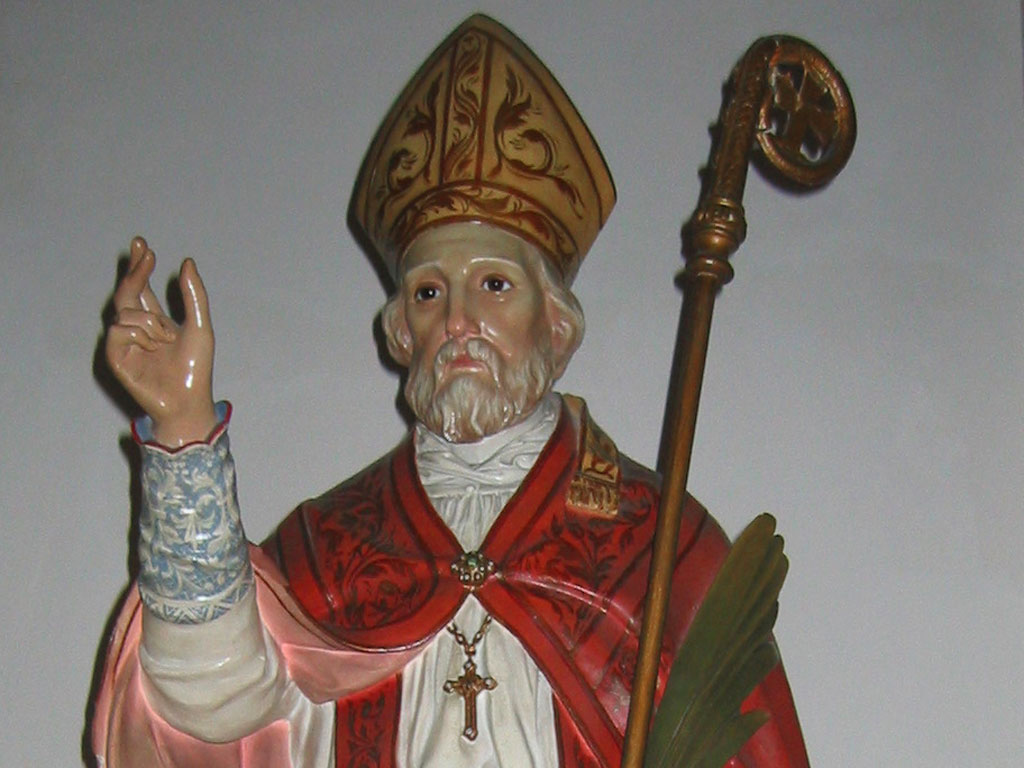San Valentino

Leonhard Beck - Heiliger Valentin (Veste Coburg) di Leonhard Beck - Bildarchiv Foto Marburg
(wikimedia.org)
February is the month of the colourful celebrations of Carnevale. Lovers and romantics of all kind, however, will be quick to remind us February is first of all the month of roses, hearts and chocolate boxes: it is the month of Saint Valentine.
Absolutely adored by the most romantics, mocked by many and embraced with flair by singles, who go out in group to celebrate their freedom, Saint Valentine is, in Italy as almost anywhere in the world, the festa degli innamorati, the day of lovers. As such, the day of San Valentino is criticized by those who sees it pretty much as nothing more than a commercial celebration, pumped up by chocolate producers and jewelery makers (... and restaurateurs. And florists. And... very much anyone producing or selling something that can be gifted). It is, in this, associated with other quintessentially "commercial" feasts, such as Mother's day, Father's day, the 8th of March.
In truth, all of these have historical or religious roots, their meaning running much deeper than their – nowadays preponderant, one must admit– commercial aspect. Mother's Day is celebrated in Italy on the first Sunday of May, the month liturgically dedicated to the Virgin Mary. Father's Day falls on the 19th of March, the day of Saint Joseph (... I know, in the US is celebrated in June...) and the day dedicated to all women, the 8th of March, is on the anniversary of one of the largest marches for women's emancipation and labor rights, that took place in New York in 1908.
It is undeniable these celebrations are today, for the most part, a heavily commercialized affair. Take Saint Valentine's day: it is estimated that, each year, about one billion Valentine's cards are sent all over the world, whereas chocolate and candy sales usually reach profits of 1.011 billion USD. About 50 million roses are sent worldwide and more than 36 million heart-shaped boxes of chocolates are sold. And these data don't even look into the hospitality and jewelry businesses, two of the main protagonist of the 14th of February's gifts exchange.
Of course, there is nothing wrong in celebrating this day with your significant other or to buy chocolates.
...Actually, if you wish to be nice for Valentine's day and make an Italian woman happy, you can send me all the chocolate you want, preferibly with peanut butter...
No...this wasn't my point. My point is, of course it's nice to celebrate and exchange gifts, but we shouldn't really need a day of the year to remember our partner is awesome (or our mom, or dad, or all women. You got the geist!). And, more importantly here for what you're about to read, do we even know why we celebrate love on Saint Valentine's day? Who was he and why is he associated with it? To find all this out, we may need to take a little step back in time, to the centuries of Imperial Rome and Christian persecutions, the centuries when the Catholic Church was still just known as Christian and was only then creating its structure and liturgy. These are the years of Saint Valentine, and this is the time our story begins...
The Basilica of San Valentino, in Terni, the saint's birthplace.
According with (Bezzone, F. 2016). Saint Valentine (or San Valentino, as we call him in Italy) is the patron saint of Terni, a quaint town in Umbria. He is protector of lovers and of people suffering from epilepsy and was born in 176 AD in Interamma Nahars, which is, indeed, know today as Terni. He is venerated by the Catholic and Orthodox church, as well as the Anglican.
A pagan by family and tradition, as many other early saints, like saint Martin of Tours or Saint Augustine, father of the Church, he converted to Christianity when an adult. The first information on the figure of Saint Valentine come from the Martyrologium Hieronymianum (5th century) the most ancient document on Christian martyrs extant. Its name derives from the fact that, for centuries, it had been erronuously attributed to Saint Jerome. In truth, its author is anonymous. Three centuries later, the Passio Sancti Valentini gives faithfuls more details about his figure and about his martyrdom; as many other Christians of the time, he was tortured and behaeaded at nightime, in Rome, his body carried to his birthplace of Terni to be buried by three of his disciples, who were in turn captured, tortured and killed, too. All this is narrated in the Passio.
Source:
(Bezzone, F. 2016). 11th Febrary of 2016. Aviable on: http://www.lifeinitaly.com/potpourri/san-valentino
No hay comentarios:
Publicar un comentario